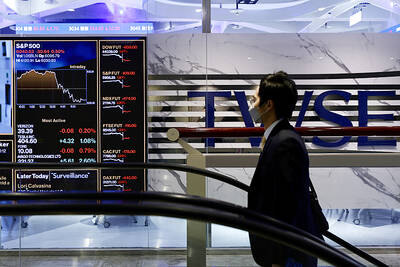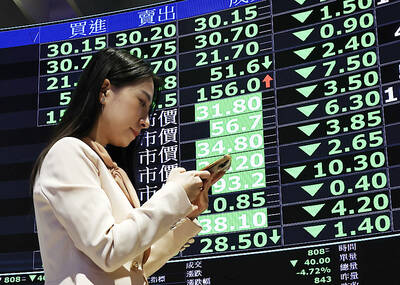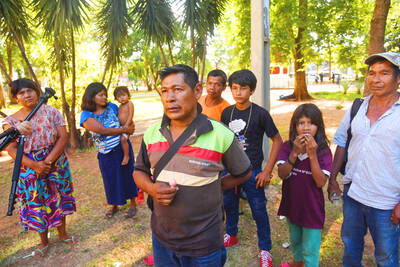JDI Taiwan Inc (JDIT, 台灣晶端顯示), a wholly owned subsidiary of Japan Display Inc, yesterday received the government’s approval to invest NT$500 million (US$18.08 million) to set up a subsidiary in Kaohsiung focusing on display module design and marketing.
The display supplier’s move came after it last month sold its local manufacturing arm, Kaohsiung Opto-Electronics Inc (KOE, 高雄晶傑達光電科技), to contract electronics maker Wistron Corp (緯創) for ¥8.58 billion (US$74 million).
JDIT has said it would continue outsourcing display module manufacturing to KOE and Wistron, while further strengthening the company’s competitiveness in its core automotive and industrial businesses.
Wistron said it plans to build a new facility in Kaohsiung to enhance its smart manufacturing capacity for automotive-related and industrial devices.
JDIT’s new Kaohsiung subsidiary “will focus on the research and development [R&D], design and marketing of its display module products,” the ministry’s Export Processing Zone Administration (EPZA) said in a statement. “The new business unit will help facilitate the company’s R&D and marketing capabilities.”
The subsidiary is to be set up in Kaohsiung’s Cianjhen Technology Industrial Park (前鎮科技產業園區), adjacent to KOE, the EPZA said.
JDIT on Monday posted several job openings on online recruitment platform 104 Job Bank (104人力銀行) for sales representatives and engineers who would be based in the Cianjhen industrial park.
The company primarily makes displays used in vehicles, mobile phones, tablets and industrial devices.
The EPZA said it is soliciting display component suppliers, 5G and artificial intelligence of things applications developers to build offices, or advanced production lines in the industrial park.
It launched a new NT$12 billion development project to expand the industrial park in the next 15 years to cater to the needs of new tenants.
The EPZA is also expanding the scope of industrial parks in Kaohsiung and Pingtung County, including Kaohsiung Software Park (高雄軟體科技園區), Pingtung Technology Industrial Park (屏東科技產業園區) and Nanzih Technology Industrial Park (楠梓科技產業園區), to cope with rising demand for land.

SELL-OFF: Investors expect tariff-driven volatility as the local boarse reopens today, while analysts say government support and solid fundamentals would steady sentiment Local investors are bracing for a sharp market downturn today as the nation’s financial markets resume trading following a two-day closure for national holidays before the weekend, with sentiment rattled by US President Donald Trump’s sweeping tariff announcement. Trump’s unveiling of new “reciprocal tariffs” on Wednesday triggered a sell-off in global markets, with the FTSE Taiwan Index Futures — a benchmark for Taiwanese equities traded in Singapore — tumbling 9.2 percent over the past two sessions. Meanwhile, the American depositary receipts (ADRs) of Taiwan Semiconductor Manufacturing Co (TSMC, 台積電), the most heavily weighted stock on the TAIEX, plunged 13.8 percent in

A wave of stop-loss selling and panic selling hit Taiwan's stock market at its opening today, with the weighted index plunging 2,086 points — a drop of more than 9.7 percent — marking the largest intraday point and percentage loss on record. The index bottomed out at 19,212.02, while futures were locked limit-down, with more than 1,000 stocks hitting their daily drop limit. Three heavyweight stocks — Taiwan Semiconductor Manufacturing Co (TSMC, 台積電), Hon Hai Precision Industry Co (Foxconn, 鴻海精密) and MediaTek (聯發科) — hit their limit-down prices as soon as the market opened, falling to NT$848 (US$25.54), NT$138.5 and NT$1,295 respectively. TSMC's

TARIFFS: The global ‘panic atmosphere remains strong,’ and foreign investors have continued to sell their holdings since the start of the year, the Ministry of Finance said The government yesterday authorized the activation of its NT$500 billion (US$15.15 billion) National Stabilization Fund (NSF) to prop up the local stock market after two days of sharp falls in reaction to US President Donald Trump’s new import tariffs. The Ministry of Finance said in a statement after the market close that the steering committee of the fund had been given the go-ahead to intervene in the market to bolster Taiwanese shares in a time of crisis. The fund has been authorized to use its assets “to carry out market stabilization tasks as appropriate to maintain the stability of Taiwan’s

In a small town in Paraguay, a showdown is brewing between traditional producers of yerba mate, a bitter herbal tea popular across South America, and miners of a shinier treasure: gold. A rush for the precious metal is pitting mate growers and indigenous groups against the expanding operations of small-scale miners who, until recently, were their neighbors, not nemeses. “They [the miners] have destroyed everything... The canals, springs, swamps,” said Vidal Britez, president of the Yerba Mate Producers’ Association of the town of Paso Yobai, about 210km east of capital Asuncion. “You can see the pollution from the dead fish.